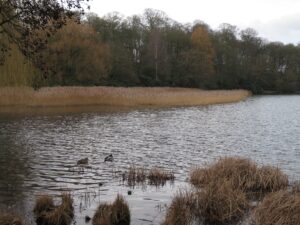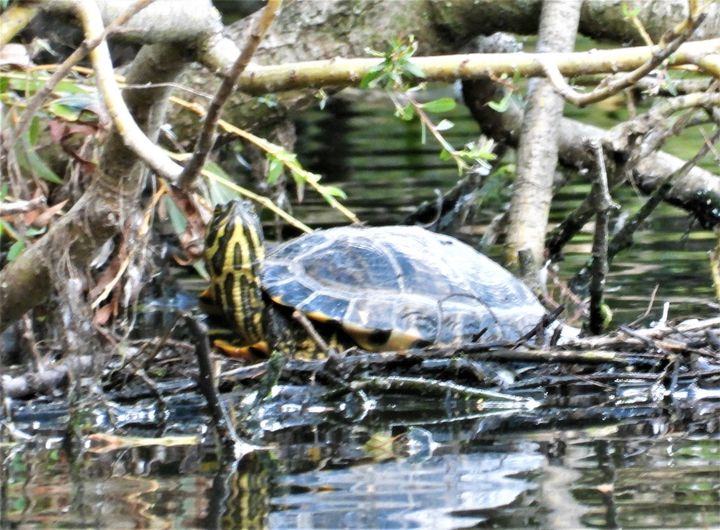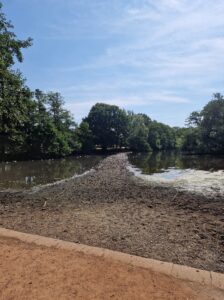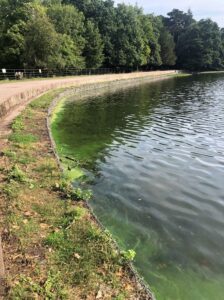The 25-acre lake was originally created in the late 18th century as part of the landscaping of the Wollaton Park estate. The lake was formed by damming a small stream that ran through the park, creating a picturesque body of water that became a focal point of the park’s landscape.
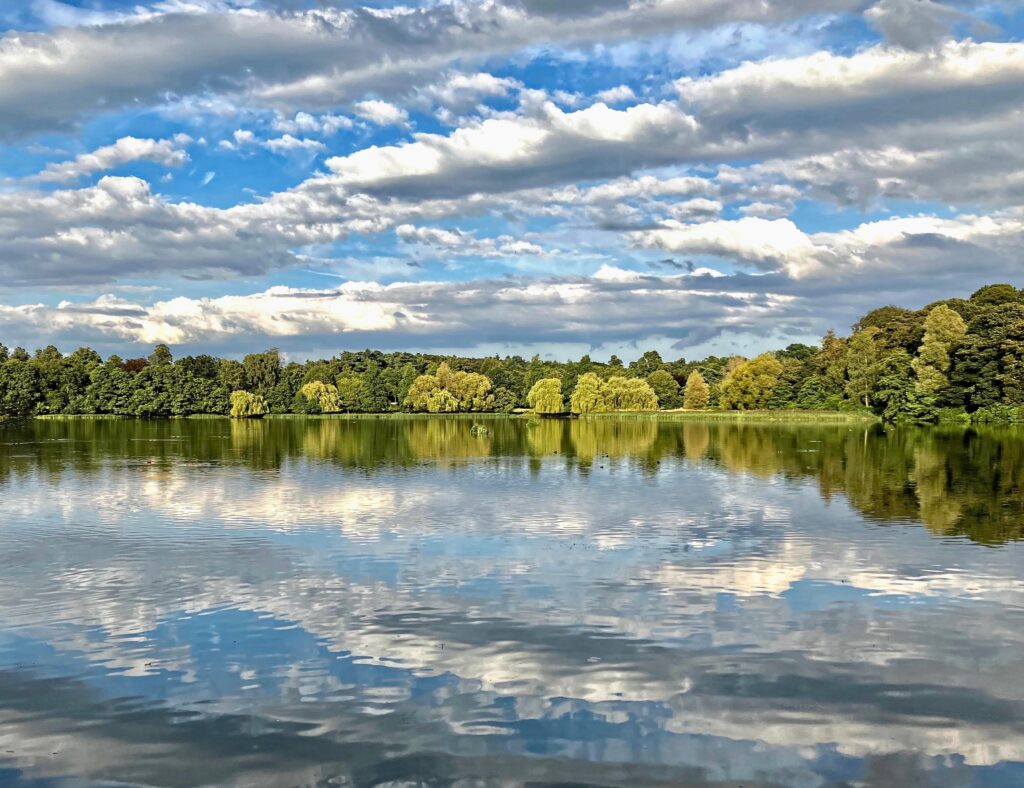
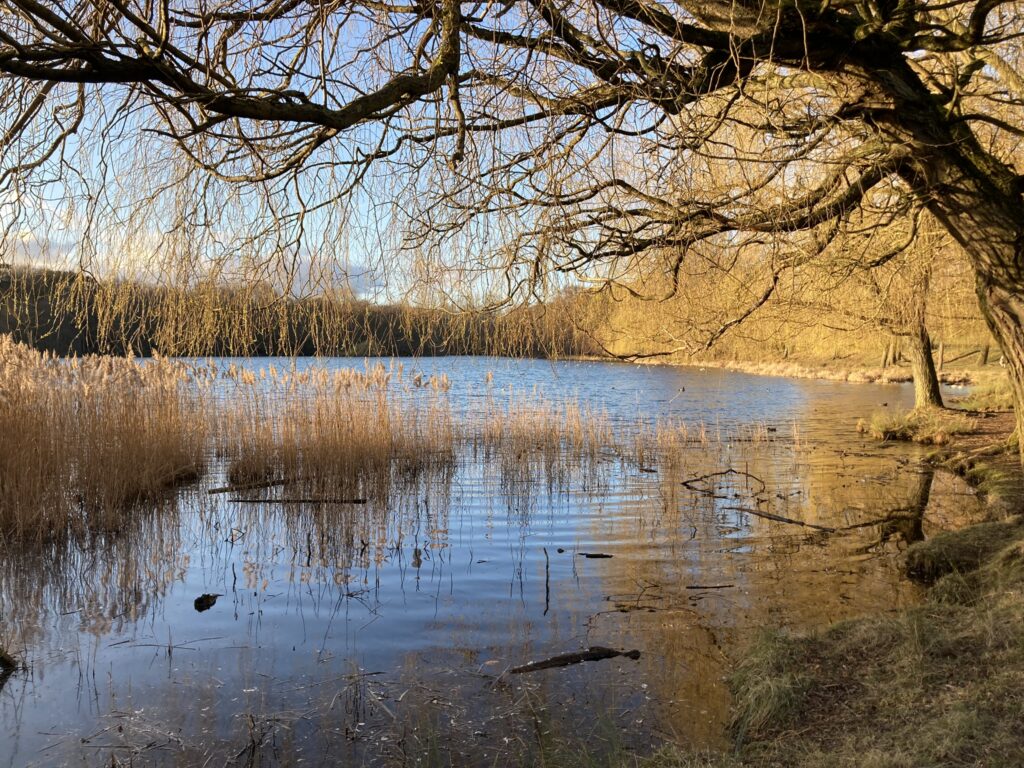
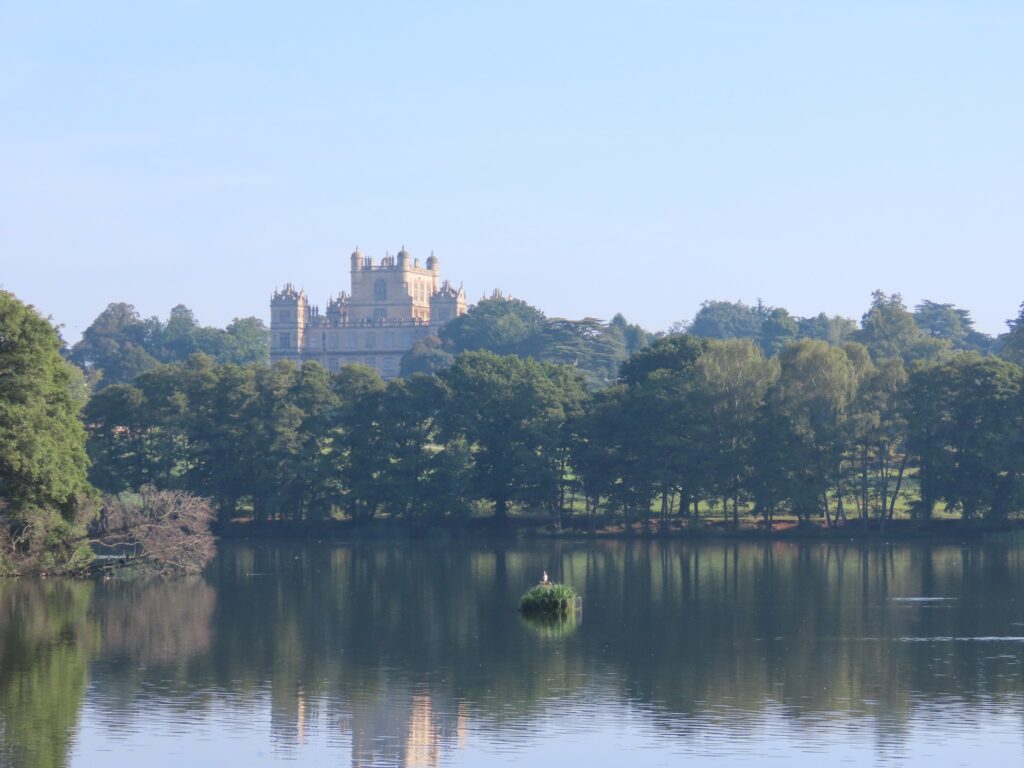
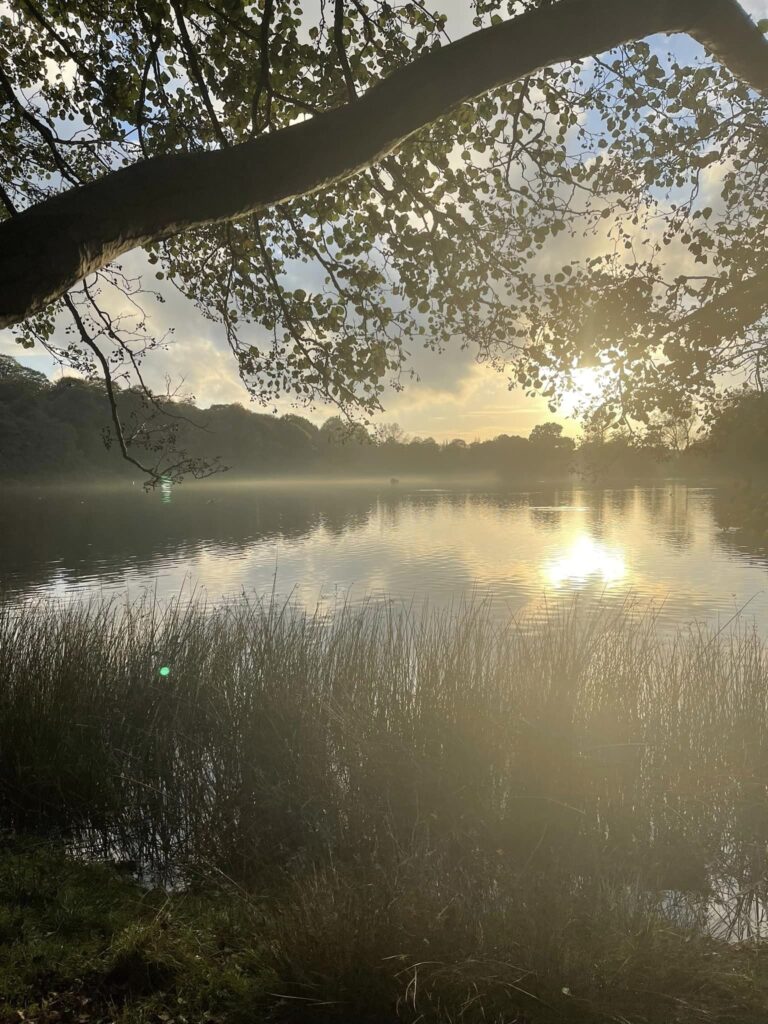
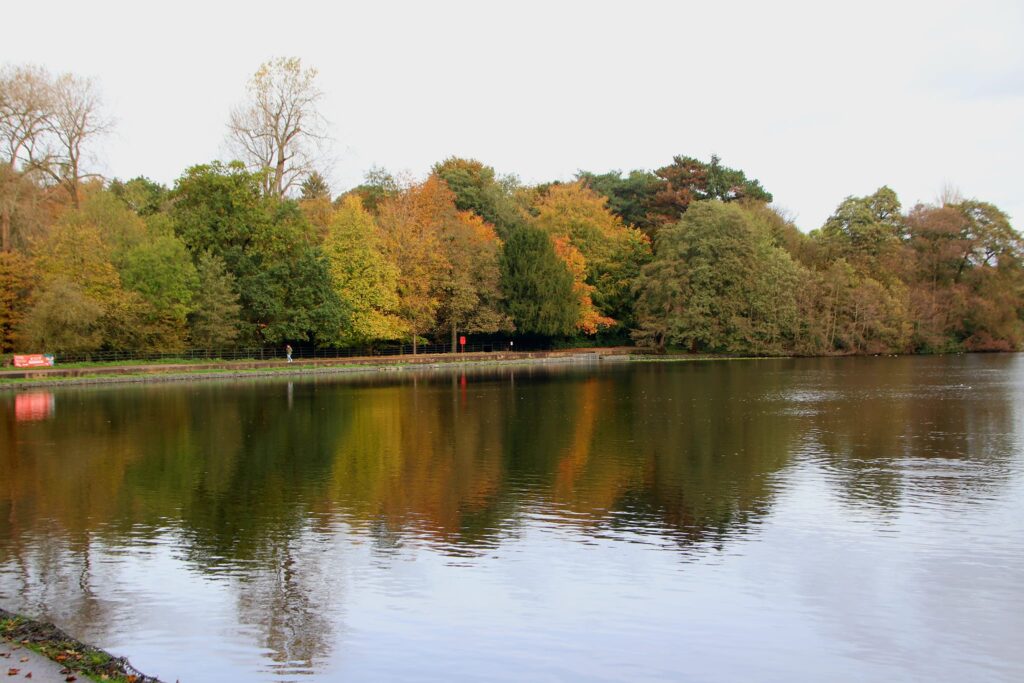
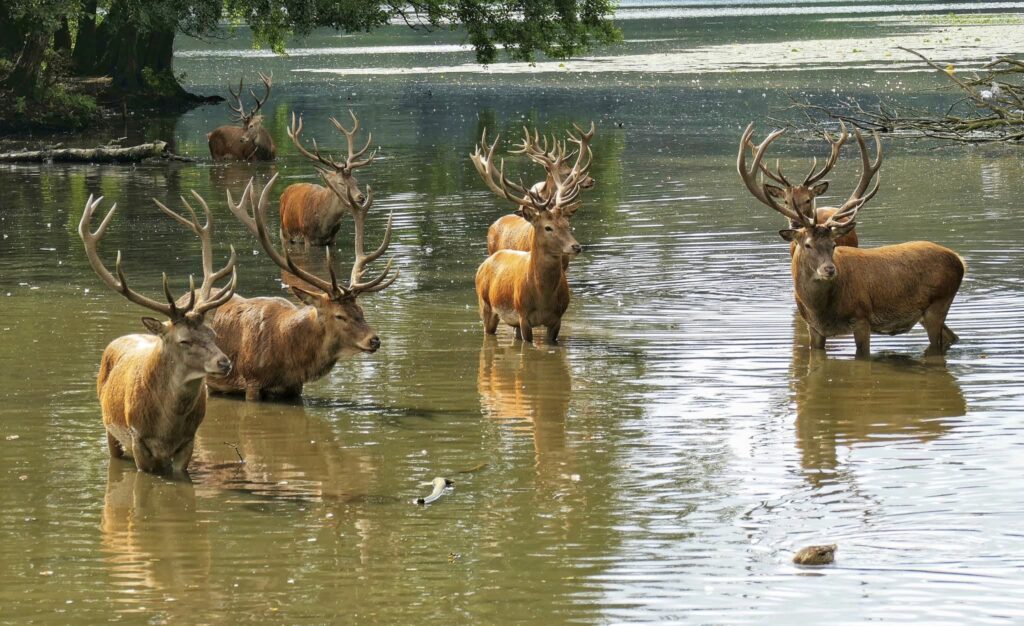
A map of 1886 reveals the lake planted with trees and shrubs, including Conifers, Pines, Yews and Rhododendrons. Their dark colours were chosen to maximise reflections in the lake. The Yews have largely died off, replaced by Sycamores and self-set Alders.
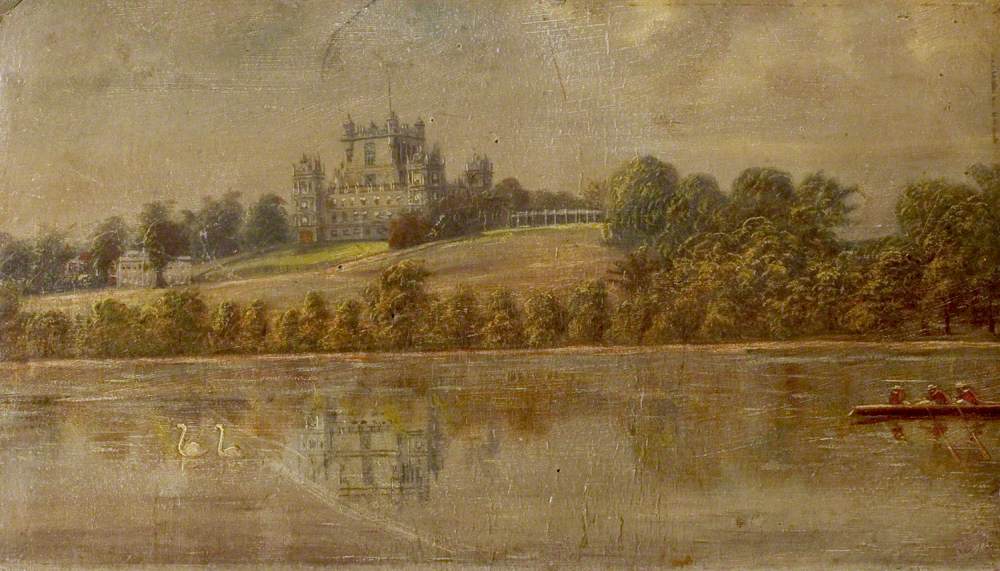
Boat House
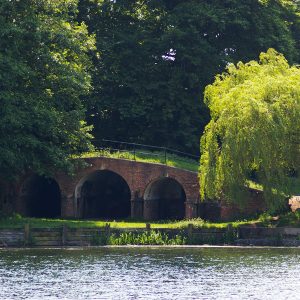
Is it a Boat House?
The English Heritage Grade 2 listing cites it as a Boat House but also describes it as a Sham Bridge, built around 1780.
However, there are suggestions that this is incorrect, as it is on the wrong side of the lake for a Boat House. Why walk around the lake to get to your boat? Why would it be on view, and not hidden away?
If you stand on the roof of the Hall it looks like a bridge and the lake looks like a river. It is a clever use of perspective, enhanced by the island, also created around 1780, which creates the illusion of a much larger stretch of river. So there is a suggestion that it is a Folly Bridge to impress visitors to the Hall and not a Boat House.
The water level used to be higher, and water used to run into the arches. During the 1970’s the water level was lowered to reduce the risk of flooding behind the lake.
Other suggestions are it was designed as a viewing platform for views across the lake towards the Hall.

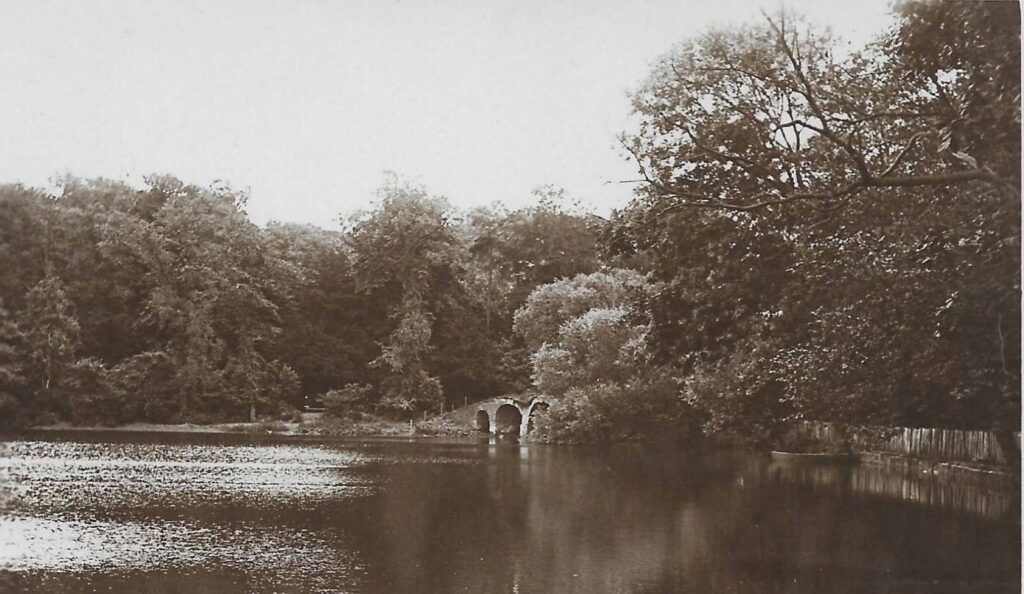
Reed Bed
Located on the north side of the lake, the reed bed is a wetland area that is home to a diverse range of plant and animal species. It serves an important ecological function by providing habitat for a range of species, including warblers and dragonflies. The reeds themselves provide a food source for a variety of insects and other invertebrates, which in turn support a diverse range of birds and mammals.
The reed bed is dominated by Common Reed (Phragmites Australis), which can grow up to three metres in height. The reeds form dense stands that provide cover and shelter for a variety of wildlife, including birds, insects, and small mammals.
Another important feature of the reed bed is it forms part of the park’s water management system. The dense stands of reeds help to filter the water, removing excess nutrients and pollutants and improving the water quality. The reed bed also helps to stabilise the shoreline, reducing erosion and protecting the lake’s ecosystem.
Water Flow
The lake is fed by rain runoff and a natural spring in Pilkington’s Paddock, which feeds the Cattle Pond. (The feed from Martins Pond is turned off, due to a suspected leak under Wollaton Road.) From the Cattle Pond the water runs to the Ha-Ha where it meets rain runoff from the Hall. The water flow then feeds the lake via two inlets, one by the duck-feeding area, and the other from the Ha-Ha into the reed bed vicinity. There is an additional feed from a spring in the Willow Plantation. There are also anecdotal reports of a spring in the lake bed itself. Overflow water from the lake goes via the Dam into the Duck-Decoy area and then on to Tottle Brook on Wollaton Vale.
Wildlife
The lake teems with life, providing a habitat for the fish and amphibians pictured in the gallery below. Beyond this, it serves as a vital resource: a drinking source for various mammals, an important area for birds (as highlighted in our bird gallery), and even a refreshing swimming spot for the resident deer.
Wildlife Gallery
Common Toad.
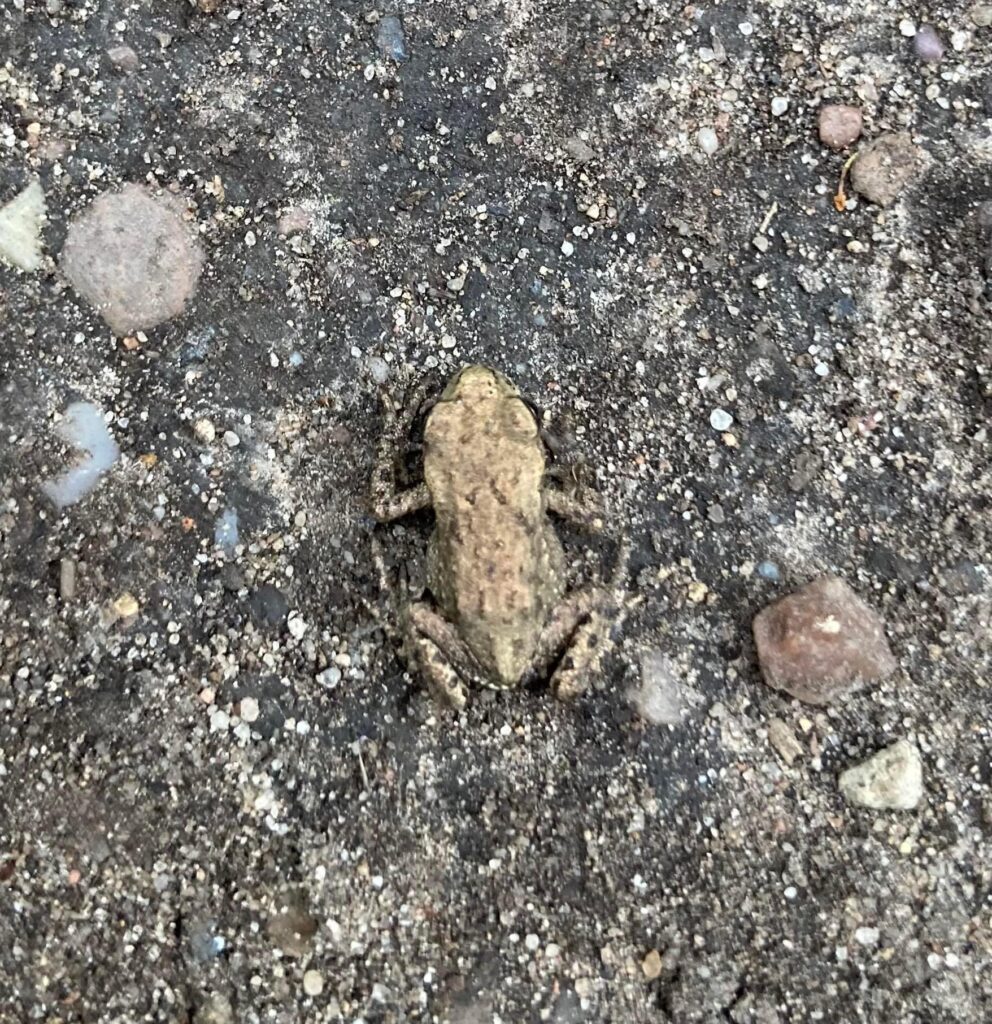
Toads and Frogs are important members of the ecosystem, as they eat a variety of insects and other invertebrates, helping to control populations.
Common Frog.
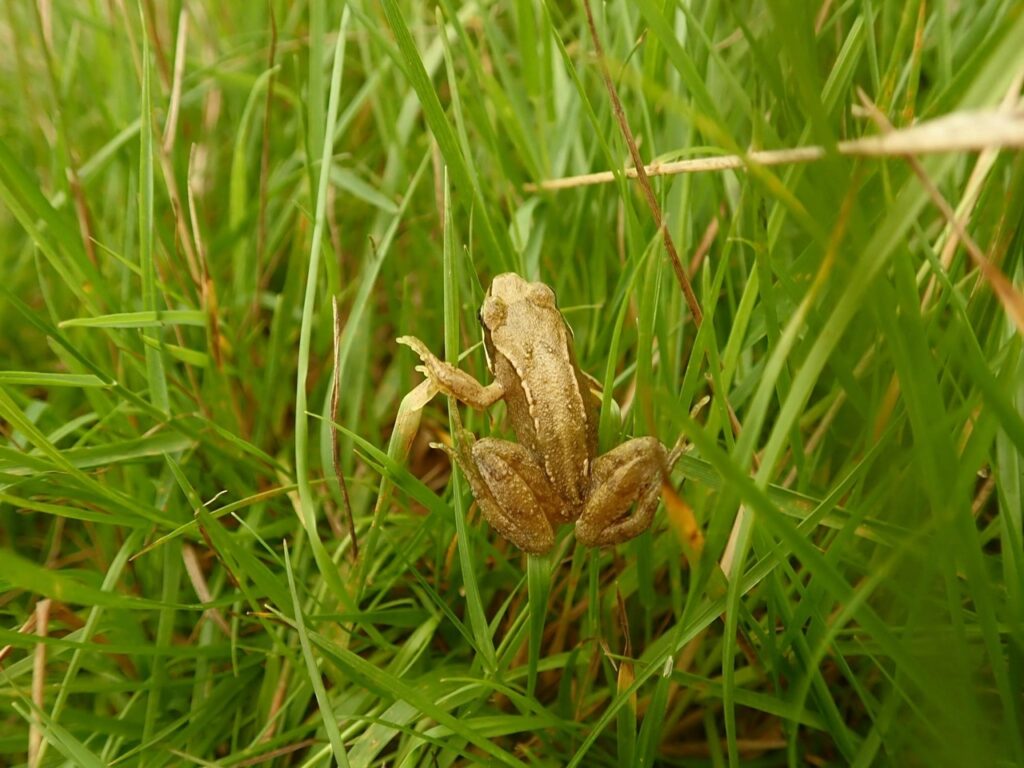
Frogs have smooth, moist skin and long legs for hopping, while toads have dry, warty skin and shorter legs for crawling. Toads are also more likely to live on land than frogs, which spend more time in the water.
Water Skimmer
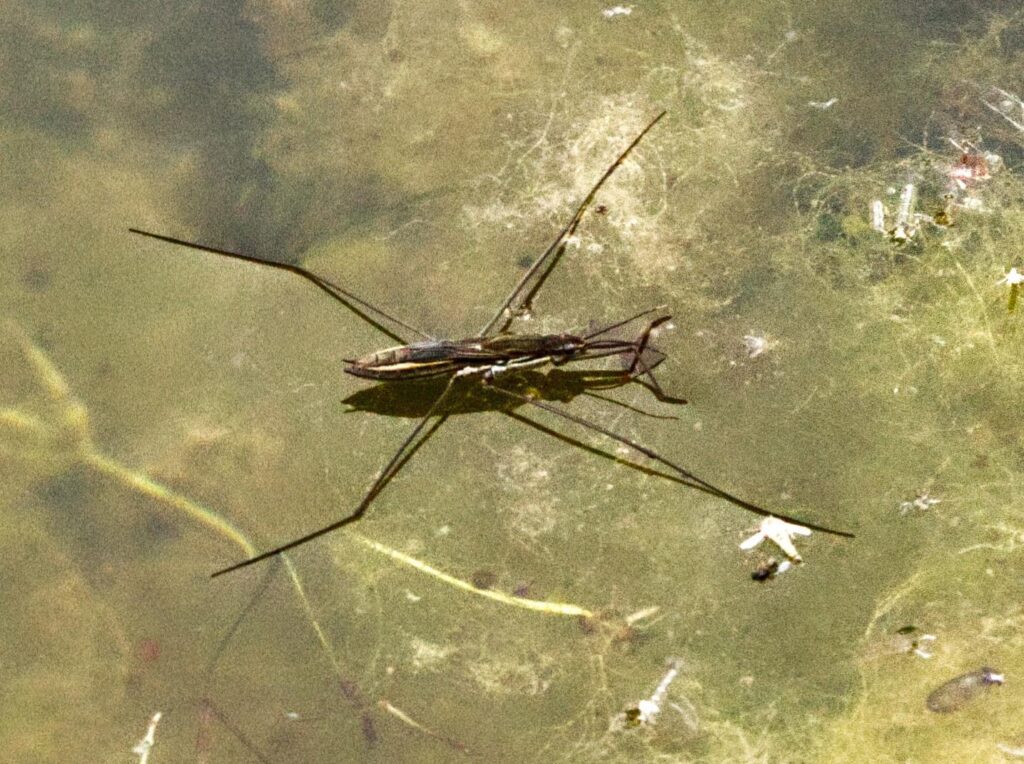
Also known as Pond Skaters.
Insects that live on the surface of ponds, lakes, and other bodies of water. They have long legs that are covered in hair that help them to skate across the water’s surface. Pond skaters are predators and feed on small insects that fall into the water. They are also good fliers and can move from pond to pond.
Fish
A survey from 2002 identified Rudd, Bream, Tench Carp and Pike in the lake. These died in 2005 due to low oxygen levels.
Today, there are a few Perch and Pike in the lake, heavily fished by the Herons and Cormorants.
FISHING IS NOT PERMITTED to preserve fish stocks for the wildlife.
Lake History
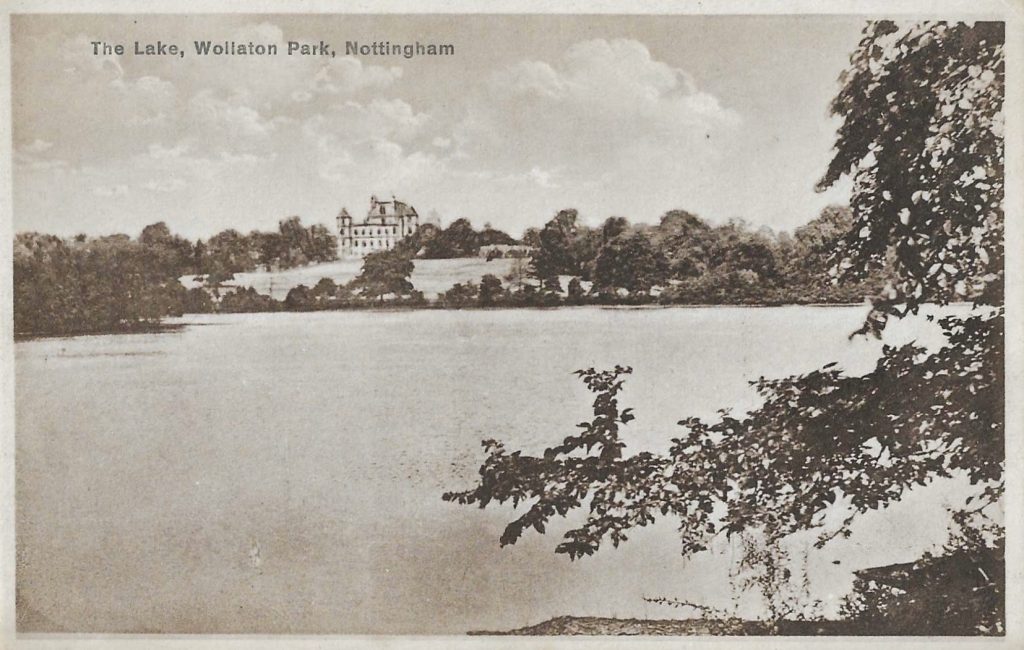
The lake subsided due to mining in around 1965. The 1975 Reservoirs Act led to an inspection which brought to light this issue and the leak in the dam core. The Coal Board accepted responsibility and made funding available to Nottingham City Council to dredge the lake to its original bed levels and reconstruct the dam.
See also this article contributed by Martin Hubbard, which paints a picture of how the lake was, probably from pre-war to the early seventies.
Dam Reconstruction
Reconstruction of the dam occurred between 1983 and 1985, and consisted of:
- Constructing a haul road into the lake to get machinery in / out. This was left in the lake as a silt trap by the water inlet from the Cattle Pond. The road was visible in the dry summer of 2022 (See photo).
- Diverting the flow from Martins Pond to Harrison’s plantation instead of to the lake to prevent the lake from filling up while work was carried out.
- Dredging the lake.
- Reconstructing the dam.
- Reconstructing the outlet to avoid the dam overtopping in severe storm conditions.
The photos below are from 1983, prior to the works being undertaken.
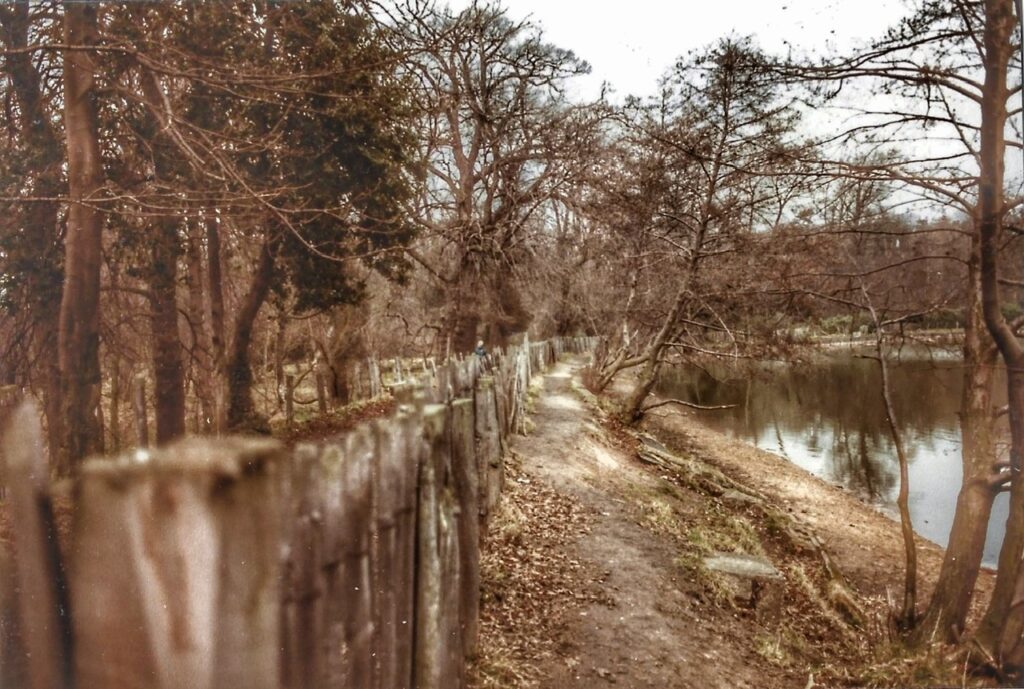
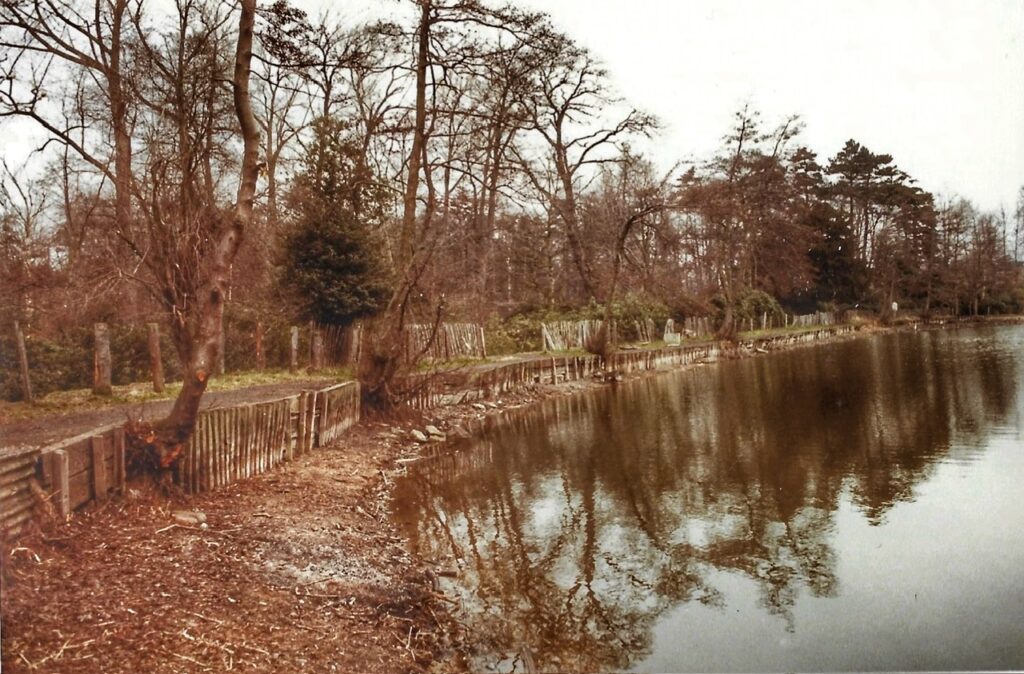
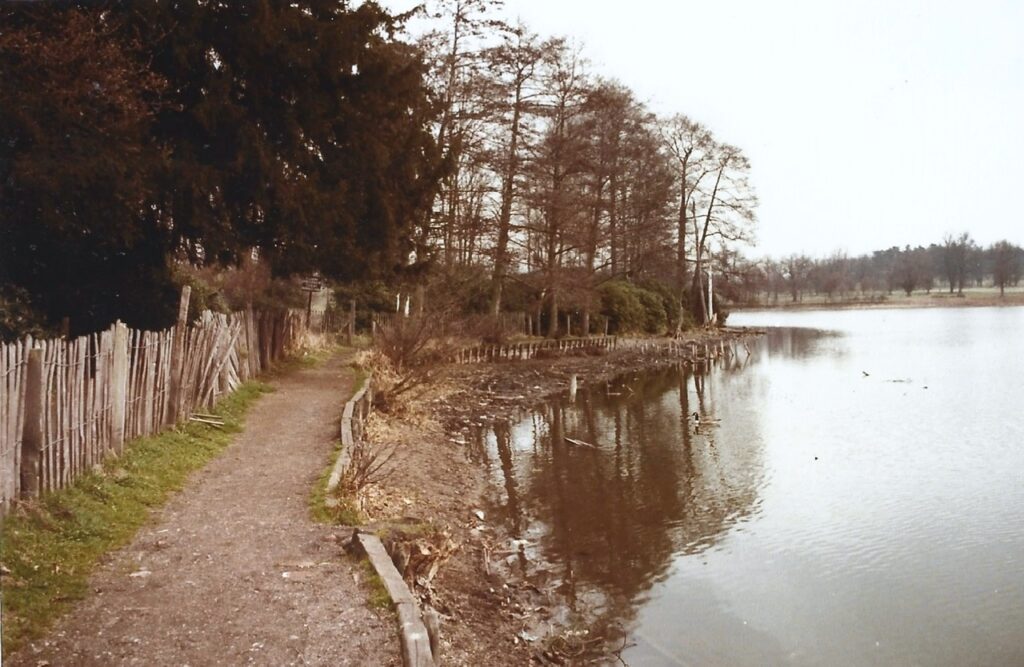


Rock Gabions
The rock-filled gabions and concrete shelves now seen along the dam wall were installed in 2005, following a dam inspection, to dissipate wave action which could erode the dam.
Photographs used on this page were taken in Wollaton Park and are reproduced with the original artist’s permission.
Credits: Colin Robbins, Jane Parfitt, Helen Ireson, Trevor White, Ade Spencer, Russ Pearce, Adam Dakin, Michael Hayes, Avtar Ram, Frank Knight.
Historic information and pictures of Dam reconstruction courtesy of Jane Parfitt.
Pictures of empty lake courtesy of Frank Knight.
Copyright © for each picture remains with the original artist, who is duly acknowledged and credited for each image.
Thanks to Kyle Heesom for sharing information from the parks archives.


